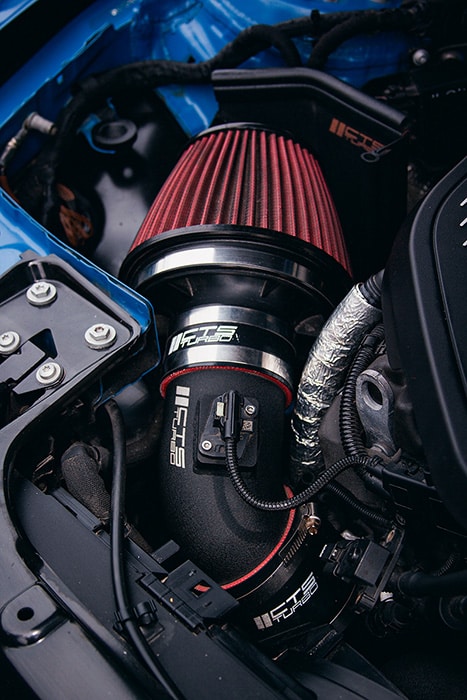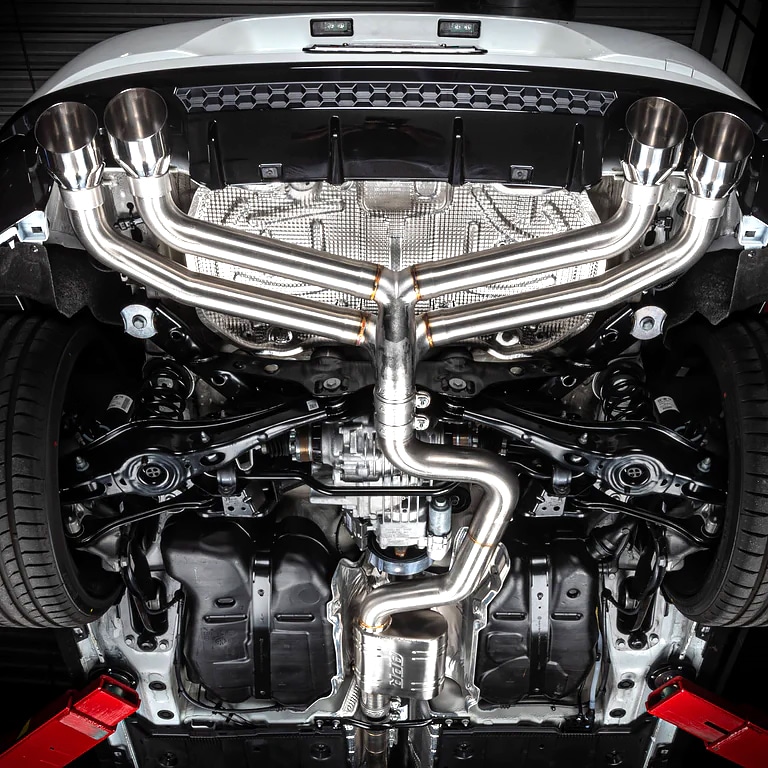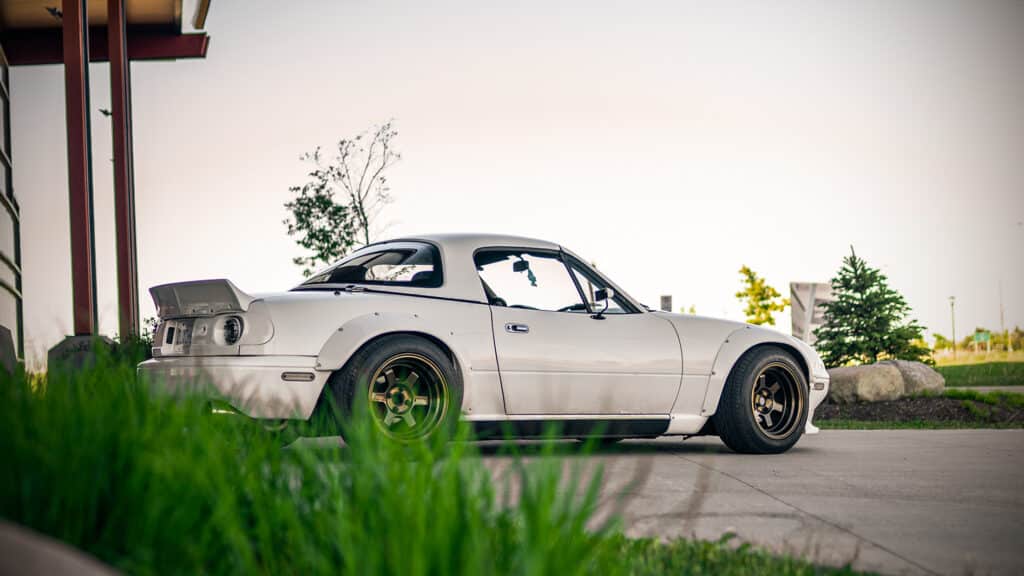When it comes to modifying cars, there are dozens of different terms that are thrown around that might not seem very clear at first, especially if you’re new to this hobby. One of those terms is “full bolt-on”.
But what exactly does it mean? This term indicates a type of build that has just about every powertrain, drivetrain, and suspension upgrade that can simply be bolted on and off as required.
These mods aren’t exactly plug-and-play because they do replace your OEM parts. Unlike forced induction, bolt-on mods aren’t invasive and can be reversed very easily.
The term is also used interchangeably to describe builds that are either naturally aspirated or boosted from the factory, relying instead on performance gains purely from aftermarket components.
In this article, we’ll explain the term full bolt-on, as well as what kinds of upgrades classify as bolt-ons and which ones you should consider installing.
Full Bolt On Meaning

So what are bolt-ons? They’re basically performance upgrades that allow you to extract power or handling gains from your car before you resort to making any permanent changes, upgrading engine internals, or installing forced induction.
As the name implies, these upgrades simply bolt onto the engine or the drivetrain.
While these components don’t require you to do any internal upgrades and a lot of them are just drop-ins, they do require you to remove the stock components.
That being said, you’d be surprised at just how much performance you can extract from your car before resorting to upgrading engine internals or installing/improving forced induction.
Let’s have a look at some of the most popular and essential bolt-on upgrades that you can install on your car, both for the engine and the chassis.
Intake

This is one of the easiest, most common, and can also be one of the more affordable bolt-on mods you can install.
Also called a short ram or cold air intake, this is a subtle, but effective way to get a slight bump in power, and it works in a very simple way.
Engines require oxygen to make the process of internal combustion happen. Naturally, the more oxygen they take in, the faster they will burn fuel and move pistons, and effectively, they will make more power.
Cold air intakes take in more oxygen than the car’s stock intake, which allows internal combustion to happen faster, resulting in additional power and better performance.
Exhaust

The exhaust system on your car is a complicated setup, as there are various different components stretching from the engine itself, all the way to the rear of the car.
Every exhaust system starts with the headers or exhaust manifold, which is where the gains are — catback or axle back exhausts alone can only do so much.
By freeing up the exhaust and allowing more gas to pass through, the car can produce more power and it can do it efficiently.
Not to mention, this will make your exhaust loud, and depending on the length and layout of the headers, you can also completely change your exhaust note.
For instance, 4-2-1 and 4-1 headers will sound different depending on the engine, and they’ll have different exhaust scavenging and back pressure characteristics.
Axle backs are another great way of improving the sound, however, they don’t add any power.
For that you need a full catback exhaust, including the headers; perhaps even a catalytic converter delete, or a high-flow catalytic converter if you want to keep your car street-legal.
Downpipes are also a great way of increasing your turbocharger’s efficiency if your car has one.
All of these exhaust modifications will improve not just the way your car sounds, but they will also give you some tangible improvements to horsepower and performance depending on the tune and exhaust size selection.
Wheels and Tires

If you’ve ever been told that modifying your car should always start with wheels and tires, there’s a good reason for that.
While it may not give you extra power, sometimes, what certain cars need to perform infinitely better than stock is a good set of wheels and tires.
In the most basic terms, high-performance tires improve your car’s handling. Their wider surface area also means that they provide more grip than a standard set of tires, and they also bring along reduced stopping distances, and the softer rubber compound means better cornering prowess.
Wheels, meanwhile, are mostly an aesthetic upgrade, but most of them weigh a lot less than stock wheels, so they can reduce the car’s unsprung mass.
This is something to think about if you’re on the fence about upgrading your wheels or coilovers first.
Suspension and Drivetrain Components

New wheels and tires will only get you so far when it comes to your car’s handling.
If you want to feel noticeable changes in the way it behaves, you’ll have to spend on significant suspension and general drivetrain upgrades.
Coilovers and lowering springs are by far the most popular bolt-on suspension upgrades you can get your hands on.
They offer plenty of handling benefits, as they’re typically equipped with stiffer springs. You can adjust your preload, rebound, and most importantly damping. The best part is that adjusting coilovers is extremely straightforward.
Another great suspension upgrade is sway bars. Most cars come with sway bars from the factory, and these also contribute toward improving the weight transfer characteristics of your car.

If you don’t want to splurge on coilovers, as they can get quite expensive, you can simply install a good set of lowering springs. These will also bring notable improvements to stability and handling.
It’s worth mentioning that if you intend on lowering your ground clearance or ride height by installing aftermarket suspension components, you might also need to spring for a set of aftermarket upper and lower control arms.
That way you can undo some of the unwanted changes in your car’s suspension geometry.
For maximum control when you get your car’s tail out, a limited-slip differential is a must.
There are many different types of limited slip differential bolt-on kits on the market. As the name implies, an LSD can detect which wheel is losing traction, and it responds by sending the power to the wheel that has the most traction.
Should You Go Full Bolt On?

Now that you have a good understanding of what FBO means, and what aftermarket car parts classify as bolt-ons, you might be wondering whether you should go for a build of this sort.
If you want to improve just about every aspect of your car’s performance, both in terms of straight-line speed and cornering abilities, it’s definitely a good idea to go full bolt-on.
Another reason would be if you’ve bought a used junker. Generally, they have pretty run-down components, so replacing them with some bolt-on parts would be an awesome way to give them a new lease of life.
For slight handling improvements and mostly aesthetics, you’ll be perfectly fine with a set of wheels and tires, as well as some lowering springs.
However, for increased power, better sound, and a properly transformative experience behind the wheel, full bolt-on is the way to go.
In Conclusion

There’s a multitude of ways to modify your car properly, and they all depend on different tastes and the purpose of a specific build.
You’ve probably heard all kinds of sayings that bolt-ons should always happen first before you do any significant modifications like forced induction or engine internals.
While they may not seem like much, bolt-on upgrades can seriously change and improve the way a car handles, sounds, and burns gas.
Sometimes, they’re all you need to get the most performance out of your car without spending huge money, and if you want your build to be the absolute best that it can be, going full bolt-on really is a no-brainer.
Would you rather go full bolt-on or take the forced induction route? Let us know by leaving a comment below!
If you found this article useful, share it with a friend! We appreciate your support.

